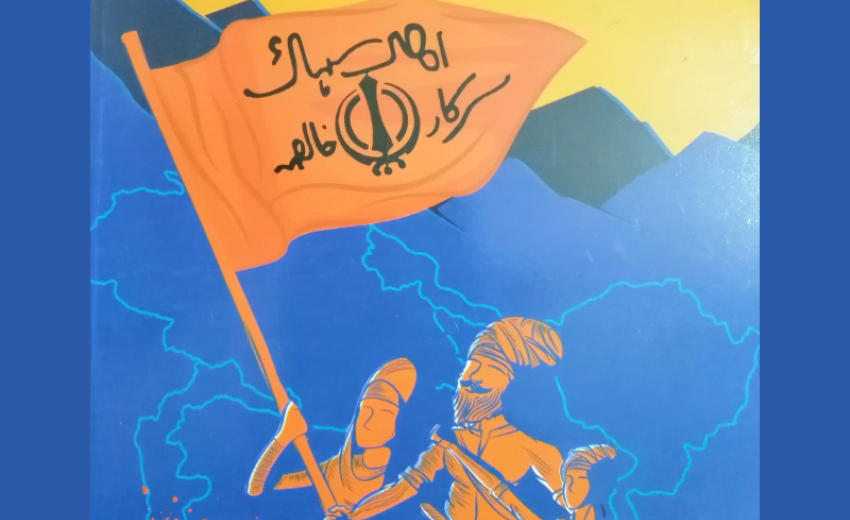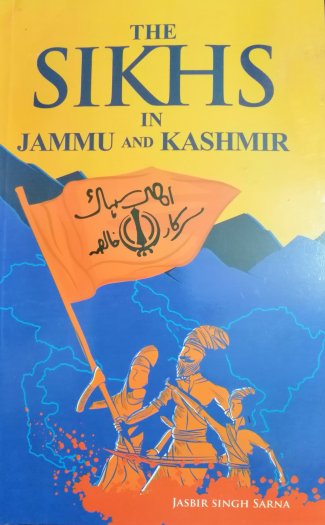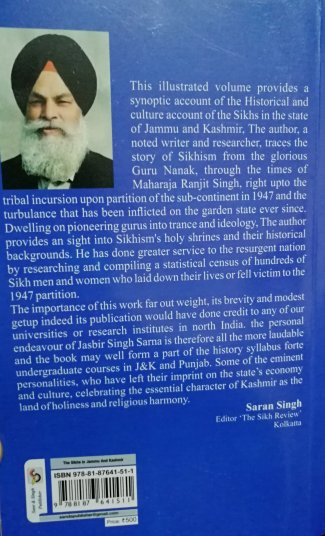History plays a significant educational role in our lives. It helps us to appreciate our past and guides us to make better decisions in the future. Over the years, Dr. Jasbir Singh Sarna has authored 56 books and written more than a hundred articles on Sikh and Sikh history. His latest book, "The Sikhs in Jammu and Kashmir," is a glimpse of the history of the Sikhs in the northern state of India, Jammu and Kashmir (J&K).
The book has 17 chapters, with each chapter highlighting the geo-political features and characteristics of the region. He traces Guru Nanak's travels through the valley and provides a detailed account of interactions with distinguished personalities. It is intriguing to note the original names of some places. For example, 'Matan', as presently referred to by most historians, was originally known as 'Mach Bhawan' [p.18]. The book chronicles Guru Har Gobind's travels, including meeting with Mata Bhag Bhari. The historical background of 17 Gurdwaras related to Guru Nanak and another 6 with Guru Har Gobind, are true eyeopeners for most explorers. Briefly, there is mention of Guru Hari Rai's visit to Kashmir in 1660 CE and Guru Gobind Singh's visit in 1692 CE. I must say that the writer has beautifully described how the Gurus introduced the foundation, culture, and idioms of Sikhi to the literal or philosophical heritage of the Kashmir valley.
Reading through the Sikh Religious Centers and Deras, it seemed incredible to discover that Punjabi was identified as the primary language in Kashmir. And if we add 'Dogri, Pahari, Gojari and Bakerwali as
Punjabi dialects' - what these truly are, the Punjabi-speaking population of Kashmir in the 1951 census stood at 18,27,971 [p.99]. This comprised nearly 40 percent, or two out of five people among the total recorded population of 46 lakh (4.6 million) for entire Kashmir. Since then, there has been a continuous decline in Punjabi speaking population in J&K, particularly the Sikhs. The 2021 census figures show a Sikh population of 234,848 and Hindus at 35,66,674.
Chapter 11 provides a background of the Sikh Raj in Jammu and Kashmir, and how the small kingdoms welcomed the Sikh Raj. On hearing of the capture of Mirowal and Nirol by the Maharaja Ranjit Singh's Khalsa forces in 1800 CE, and fearing the forceful takeover of Jammu, the Raja of Jammu "at once offered twenty thousand rupees for meals to Khalsa army" [p.87] and offered to make Jammu as part of the Sikh kingdom. The author underscores a significant historical fact about introducing the 'NanakShahi Coin' in Kashmir in 1819.
The genocide that followed the partition of the Indian sub-continent in 1947, and the annihilation of the Sikh population caused by the tribal attacks, is very tragic. Dr. Sarna has forever reinstated the researched data and photographs of 100 Kashmiri Sikh personalities (men and women) who fell victim to the insurgent attacks or sacrificed their own lives to avoid a worse fate.
In Chapter 14 of the book, the author deals with the "Formative Eight Decades and Challenges", experienced in and by the Kashmir Valley. The author very eloquently narrates the ups and downs of human life in the valley. He has also highlighted the contributions of Sikhs in the literary and artistic fields. Although they [the Sikhs] are very few in numbers, they have contributed significantly to enriching the art, culture, and literature of Jammu and Kashmir. After intensive research, the author has listed the names and addresses of 1268 persons who were martyred during the Partition of 1947 [Appendix 2]. Dotted with personal reminiscences, the volume concludes with genealogical tables of some eminent personalities who left their mark on Kashmir's economy, culture, and social harmony; without compromising their religious heritage, traditions, and distinctive character.
The book contains ample research material for undergraduate history courses, particularly for students in J&K and Punjab. It also provides the raw material for further exploration of vast challenges in human history.
The personal effort of the research scholar is highly commendable. Knowledge of history lays the foundation of human progress in life and equips us to suitably adjust ourselves to make our future better and prosperous.
Heartiest Congratulations to Dr. Sarna for writing this book (History of Sikhs in Jammu and Kashmir)!


